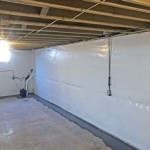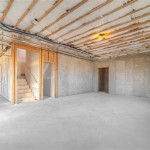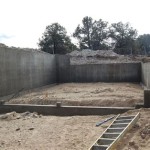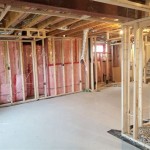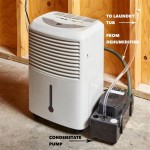Essential Aspects of Raised Flooring for Wet Basements
Wet basements can be a major headache for homeowners. They can cause mold, mildew, and other health hazards, and they can also damage your belongings. If you're dealing with a wet basement, one of the best ways to fix the problem is to install raised flooring.
Raised flooring is a system of elevated panels that are installed over the existing floor of your basement. This creates a space between the floor and the panels, which allows air to circulate and prevents moisture from building up. Raised flooring can be made from a variety of materials, including plastic, metal, and even wood.
Benefits of Raised Flooring for Wet Basements
There are many benefits to installing raised flooring in a wet basement, including:
- Prevents mold and mildew: By creating a space between the floor and the panels, raised flooring prevents moisture from building up, which can lead to mold and mildew growth.
- Improves air quality: The air space created by raised flooring allows air to circulate, which improves air quality in the basement.
- Reduces moisture damage: Raised flooring helps to protect your belongings from moisture damage by keeping them off the floor.
- Easy to clean: Raised flooring is easy to clean because you can simply sweep or mop the panels.
Types of Raised Flooring for Wet Basements
There are two main types of raised flooring for wet basements:
- Open grid flooring: Open grid flooring has a grid-like design that allows air to circulate freely. This type of flooring is ideal for basements that are prone to flooding.
- Solid panel flooring: Solid panel flooring is made from solid panels that are placed on top of a support structure. This type of flooring is less expensive than open grid flooring, but it does not allow air to circulate as well.
Installing Raised Flooring in a Wet Basement
Installing raised flooring in a wet basement is a relatively simple process. However, it's important to make sure that the floor is properly prepared before installing the flooring.
To prepare the floor, you will need to:
- Remove any existing flooring.
- Level the floor.
- Install a vapor barrier.
Once the floor is prepared, you can begin installing the raised flooring.
To install raised flooring, you will need to:
- Place the support structure on the floor.
- Place the flooring panels on top of the support structure.
- Secure the flooring panels in place.
Once the raised flooring is installed, you can begin using your basement again. Raised flooring can help to keep your basement dry and mold-free, and it can also improve the air quality in your home.

Wet Basement Flooring Options With Built In Vapor Barrier

Wet Basement Flooring Options With Built In Vapor Barrier

Wet Basement Flooring Options With Built In Vapor Barrier

Wet Basement Flooring Options With Built In Vapor Barrier

Basement Modular Carpet Tiles With A Raised Lock Together Base

Basement Floor Design Ideas Choose The Best Flooring Solutions For Your

Thermaldry Basement Flooring Systems Waterproof

Thermaldry Basement Flooring Systems Waterproof

What Is How Important Raised Flooring And Air Flow
Is A Raised Floor Viable And Safe In Basement Bathroom Plumbing Diy Quora
See Also

